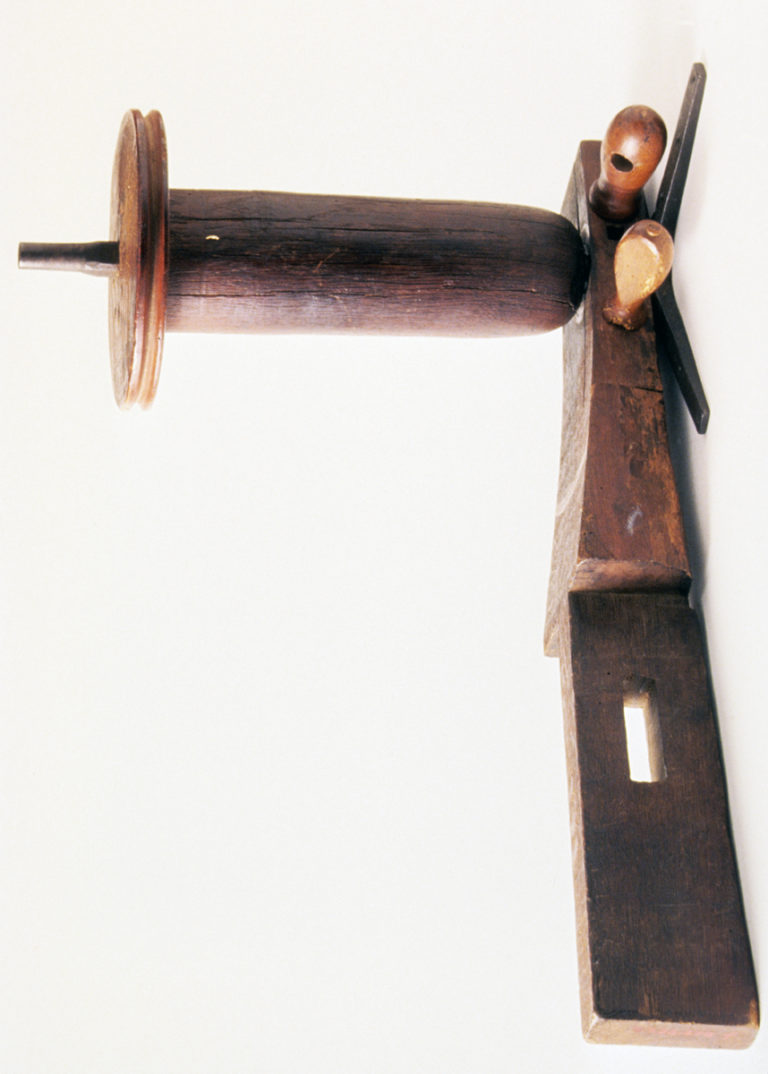Lathe
A lathe is a tool for shaping woods and other materials. By turning a piece of wood by means of a rotating drive, a cabinetmaker is able to apply various cutting tools to create forms such as chair legs, columns of tea tables and stands, and round table tops. The Dominys equipped the shop with two types of lathes, a “great-wheel lathe” and a “pole lathe,” each probably made between 1750 and 1800.
Requiring two operators—one to turn the wheel with a hand crank and the other to cut the workpiece—the great-wheel lathe could be used with a specialized arbor and cross for face-plate turning, to “dish” or cut rims on tops of tea-tables, stands, and trays, and to turn plates and bowls. An apprentice generally used a series of pulleys to provide and control the speed of the wheel which supplied power to the lathe, permitting the cabinetmaker to make continuous cutting and have greater accuracy in shaping the wood.
Click below to watch a video of Winterthur's Greg Landry showing Bob Vila how to use the great wheel lathe.
Great wheel lathe, Nathaniel Dominy IV (maker), 1750-1800. American white oak; Maple; Red oak; Hickory; Iron. 66" (H), 10.4" (W). Museum purchase with funds provided by Henry Belin du Pont, 1957.0026.370 K

The most important lathe attachment to survive in the Dominy Tool Collection is this arbor and cross, used by Nathaniel Dominy V to turn the dished circular tops of stands and tea tables. A precut circular slab of mahogany, cherry, or maple was fastened to the cross with screws and turned in a vertical position. With gouges and chisels Nathaniel V then proceeded to fashion the plain but aesthetically pleasing table tops.
Arbor and cross, (maker Deacon David Talmage, c.1795); puppet and wood fittings (maker, Nathaniel Dominy V, 1795). White oak, dogwood, hickory, maple; Iron. 16.7" (L), 30.4" (H), 14.1" (W). Museum purchase with funds provided by Henry Belin du Pont, 1957.0026.370
Using a foot treadle, a single operator powered the pole lathe—so called because it relied on a cord connecting the workpiece to a loose foot treadle below and flexible pole above, fixed at one end to act as a spring. The long, slender sapling that the Dominys chose for this purpose is featured in this installation in its original position. Because one person could operate the pole lathe and keep both hands free and because it was relatively easy to construct, the pole lathe remained in use into the nineteenth century.
Pole lathe, 1750-1775. Ash; Pine, white; Oak, red; Iron. 42.6" (H), 78.5" (L), 34.5" (D). Museum purchase with funds provided by Henry Belin du Pont, 1957.0026.372


